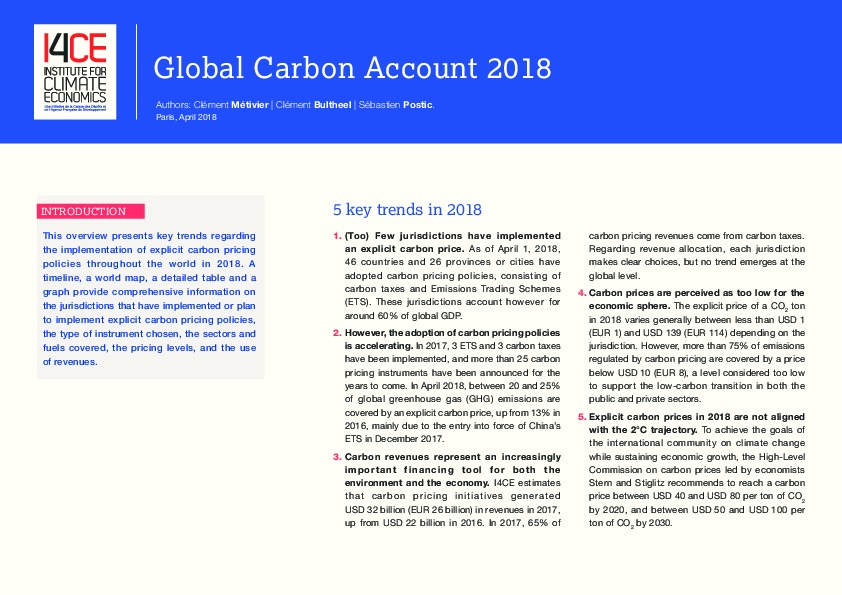Global Carbon Account 2018
I4CE‘s Global Carbon Account 2018 presents key trends regarding the implementation of explicit carbon pricing policies throughout the world in 2018.
5 key trends in 2018
- (Too) Few jurisdictions have implemented an explicit carbon price : as of April 1, 2018, 46 countries and 26 provinces or cities have adopted carbon pricing policies ;
- The adoption of carbon pricing policies is accelerating : in 2017, 3 ETS and 3 carbon taxes have been implemented, and more than 25 carbon pricing instruments have been announced for the years to come ;
- Carbon revenues represent an increasingly important financing tool for both the environment and the economy : I4CE estimates that carbon pricing initiatives generated USD 32 billion (EUR 26 billion) in revenues in 2017, up from USD 22 billion in 2016 ;
- Carbon prices are perceived as too low for the economic sphere : the explicit price of a CO2 ton in 2018 varies generally between less than USD 1 (EUR 1) and USD 139 (EUR 114) depending on the jurisdiction ;
- Explicit carbon prices in 2018 are not aligned with the 2°C trajectory.
A timeline, a world map, a detailed table and a graph provide comprehensive information on the jurisdictions that have implemented or plan to implement explicit carbon pricing policies, the type of instrument chosen, the sectors and fuels covered, the pricing levels, and the use of revenues.


